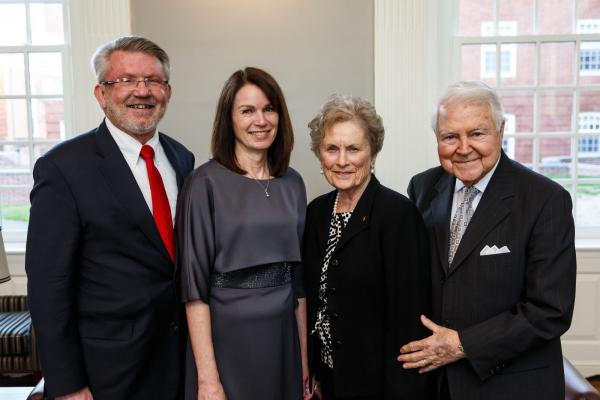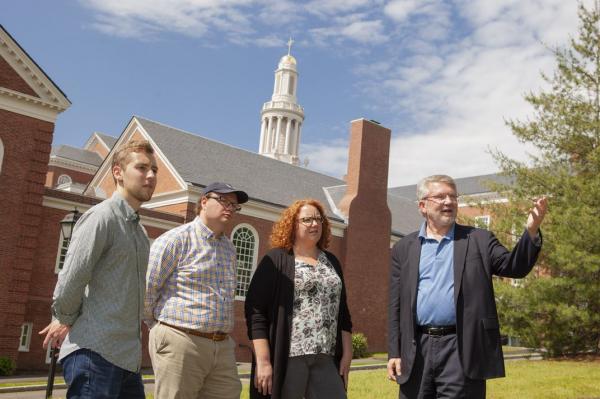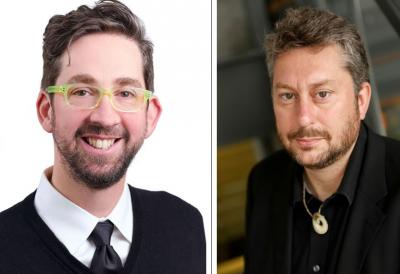Buoyed by a key donation and the selection of stellar project partners, Yale Divinity School has taken a crucial step forward in planning its proposed “Living Village”—believed to be the most ambitious living-building residential project in the world.
 In December, Divinity School supporters George and Carol Bauer contributed $2 million to enable YDS to hire an architect and design firm. Now, YDS has assembled that project team and is creating detailed plans for a 127,000-square-foot residential community adjacent to its home on Sterling Divinity Quadrangle.
In December, Divinity School supporters George and Carol Bauer contributed $2 million to enable YDS to hire an architect and design firm. Now, YDS has assembled that project team and is creating detailed plans for a 127,000-square-foot residential community adjacent to its home on Sterling Divinity Quadrangle.
Intent on making a powerful theological statement, restoring the Divinity School’s historic residential character, and educating students on sustainable living practices, YDS plans to build a housing complex that derives all its energy from the sun and all its water from onsite rainfall. Acclaimed living-building pioneer Jason McLennan of Seattle has been enlisted to guide the project, with Living Building design experts Bruner/Cott & Associates of Massachusetts selected as partner architects.
“We are deeply grateful to George and Carol for their generosity in supporting the vision of the Living Village,” YDS Dean Greg Sterling said. “Thanks to the generosity of the Bauers and the talent and commitment of the design team we’ve assembled, YDS is poised to make history. This project will transform how every college and university thinks about residential buildings in the future.”
A former IBM executive, George Bauer is a Connecticut resident who remains active in business and philanthropic causes. Bauer serves on the YDS Dean’s Advisory Council and is a former member of the Board of Andover Newton Theological School, which has recently affiliated with YDS and relocated to the Divinity Quadrangle. Bauer first became involved with YDS after being impressed by a sermon given by then-YDS Dean Thomas Ogletree at the United Methodist church where the Bauers attend, and he has since become deeply committed to the School and its students.

The School’s newly approved sustainability plan, among other measures, discourages unnecessary air travel by faculty and staff by assessing a surcharge on airfares, the surcharge funds being channeled into sustainability projects. Inspired by the commitment of the campus, the members of the Dean’s Advisory Council—who pay for their own travel for meetings at Yale—elected to apply the measure to themselves as well.
But the most ambitious expression of the School’s sustainability commitment is the Living Village project, currently projected to cost $100 million. To achieve carbon neutrality, the complex will independently capture and process all its energy and water, and process all its waste, on site. Student residents will sign a covenant committing themselves to the living practices and stewarding roles on which the buildings’ successful functioning will depend.
The next stage of planning will resolve the following design issues: the number and configuration of the buildings (currently estimated to range from nine to 12); the building materials; the specific sustainable environmental systems needed to operate the village; and a more precise cost estimate. The architects will present concepts to the greater Divinity School community at Convocation and Reunions in October, with the full plan scheduled for approved in December.
The Living Village is expected to house 150 students in below-market-rate residences—a boon to the School’s efforts to make divinity education more affordable. Units will range from one-person “monastic” rooms to small two-bedroom apartments for families. The complex will likely include a pair of classrooms, a small chapel, study areas, and a fitness center, as well as other spaces including yoga and meditation rooms, community and small-group kitchens, a café, and community dining rooms.

“Above all,” Sterling said, “we expect the Living Village to stand as a resounding expression of our theologically rooted commitment to conserving the Earth’s resources and creating a more sustainable future.”
Yale President Peter Salovey ’86 Ph.D. hailed the project as an inspiring example of the university’s commitment to fostering sustainability through its educational offerings and operational practices. “The Living Village will be a landmark in environmental design on a university campus and set an example for schools around the world,” President Salovey said. “I am excited that George and Carol have helped us move closer to our goal and grateful to them for their visionary contribution.”
The University has approved gift recognition opportunities for major donors, and fundraising for construction will kick off as soon as the design is completed. For further information, contact Senior Director of Development Jim Hackney ’79 M.A.R. at james.hackney@yale.edu